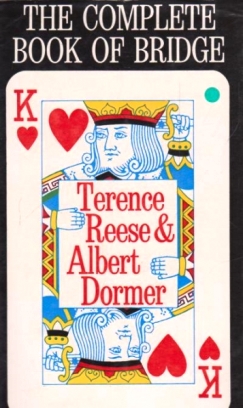When faced with a ragged trump suit, declarer should look for a way of inducing a defensive error. A familiar ruse is the simulation of a desire to ruff. West leads the King of Diamonds against Four Spades:
Lead: ![]() K
K
to win and return the suit, would be artless. The duck is a more stylish play, for that is what West would expect if declarer really wanted to ruff the suit in dummy.
Gambits of this kind may lead to an indirect inference even when they are not immediately successful. If in the above example, West fails to switch to a trump that may suggest that he has not an easy holding such as Ax.
Wtth the doubleton Ace, West would see a chance to clear dummy’s trumps. Furthermore he might fear to be left on lead with the second round of trumps and forced to lead through dummy’s strong holdings in hearts and clubs.
West’s. failure to lead trumps therefore, would mark East as a more probable candidate for the doubleton Ace.
Here is another common way of gaining a sidelight on the trump suit:
East dealer; North-South vulnerable
| West | North | East | South |
| 1 |
1NT | Pass | 4 |
| The End |
Lead: ![]() K
K
West led the King of spades and East played the six. Now came the seven of diamond covered by the eight, nine and King. All depended on finding the Queen of trumps and clearly there was no assurance that West held this card. A fair spade suit and the Ace of clubs would suffice for his third in hand call at favourable vulnerability.
South led his second spade to West’s Ace and East completed a peter. Dummy won the diamond continuation, the Queen of spades was ruffed by East and over-ruffed by declarer. East subsequently showed out when the Ace of trumps was laid down and a difficult view was avoided. It is easy to criticise East for ruffing the spade but many would make that mistake.
The above hand features a trump holding that often presents a sheer guess. Declarer has nine cards in the combined hands, missing the Queen and three small, and mathematically there is little between a second-round finesse and the drop. The general strategy of the hand will sometimes suggest which line of play should be adopted, as in this deal from tournament play :
| North | South |
| 1 |
1 |
| 3 |
3 |
| 6 |
Lead: ![]() K
K
South’s cue-bid was justified, for if his partner’s high cards lay mainly in the red suits the slam would be odds-on. On the actual cards, Six Hearts was an optimistic contract but that was not South’s fault. North’s final call was based upon facile reasoning. Three Hearts had been a slight under-bid, he held wonderful controls and fine trump support. That is true, so far as it goes, but a more tutored sequence is available. Over Three Spades the auction might proceed—Four Clubs —Four Hearts—Five Diamonds —Five Hearts—pass. The choice of Four Clubs as the first cue-bid would avoid placing undue emphasis on the indifferent diamond suit. With all controls accounted for, South could attribute his partner’s failure to bid the slam to concern with diamonds, and his own holding in that suit should persuade him to sign off.
However, West led the Queen of Spades against Six Hearts and declarer’s first problem was to find the Queen of trumps. The right play is clearly marked.
South must rely on a 2-2 trump break, despite the old theory that a singleton in one suit is often matched by singletons in other suits. An even trump break will facilitate the subsequent play by allowing South to eliminate the black suits, discard a diamond from each hand and duck the first round of diamonds. This play wins against a 3-1 diamond break unless the nine is singleton. A 3-1 trump break, even if successfully negotiated, ties the hand to an even diamond break.
